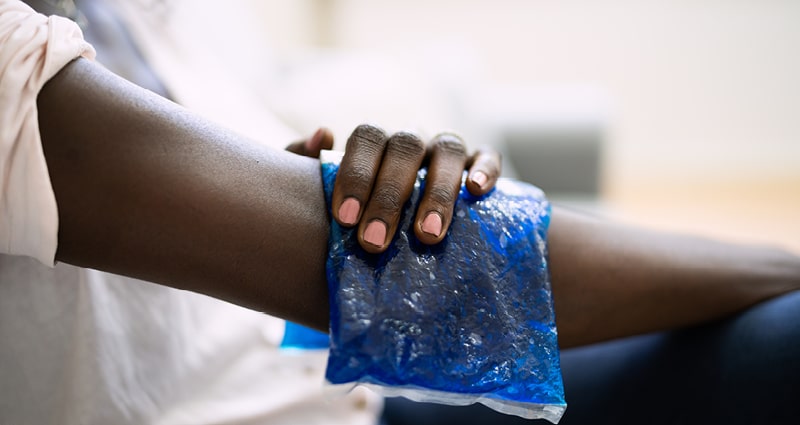When to Use Heat or Ice for Muscle Aches or Injuries
Hot and cold therapy is a popular treatment recommended by primary care providers at our health system for aching muscles and joints. If you decide to try this therapy, it can be difficult to know when to use heat or ice.
When to Heat It Up
When you apply heat to your muscles or joints, your blood vessels get bigger. Bigger blood vessels mean better blood circulation to the affected area. This better circulation helps muscles and joints relax. If you experience arthritis, back pain or tendinosis (chronic pain from a tendon breaking down), heat therapy may help. Try these options:
- Heat wrap. You can use a heating pad or wet washcloth warmed in the microwave. Be sure to pad the wrap with a thin towel or blanket to keep from burning your skin.
- Hot compress. Reusable packs that contain gel beads are a great option for compresses.
- Hot tub or warm bath. Soaking in hot water can help increase blood flow and ease aches and pains. If the hot tub has jets, they could help massage problem spots in your back.
Ask your primary care provider before trying heat therapy, especially if you have heart problems. Never apply heat or soak in a hot tub for the first two to three days after an acute injury, such as a sprained ankle, because it could increase inflammation and delay proper healing. After this period, heat could help aid recovery. Remove heat after 20 minutes to prevent burns.
When to Chill
Cold therapy works by numbing the affected area and reducing swelling, bruising and inflammation. To make an ice pack, put ice in a plastic bag and wrap it with a paper or thin towel. You can also buy gel-packed pouches to freeze. Here’s when it’s best to apply ice:
- After an injury. Whether a slip around the house or playing sports, if you experience an acute injury, it’s best to see your healthcare provider to make sure nothing is broken. Afterward, applying ice can reduce swelling and bruising.
- Gout flare-ups. Gout causes pain and inflammation that ice can help.
- Headaches. Sometimes an ice mask or cold wrap around your forehead can ease a throbbing headache.
- Tendonitis. Tendonitis is a painful inflammation of your tendons. Cold therapy can decrease inflammation and lessen pain.
As with heat, remove ice after 20 minutes to prevent numbness and skin damage.




